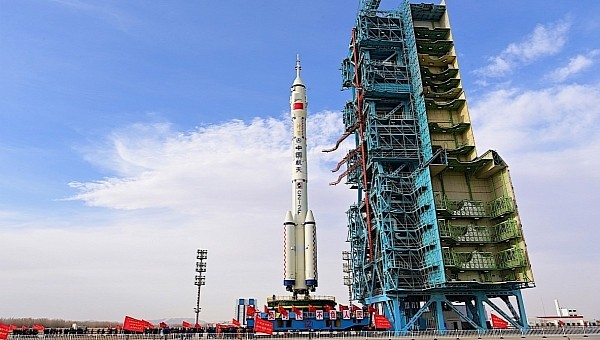Seeing how the Americans and Russians are planning to make space and the surrounding celestial bodies their second home, China decided some time ago it should be part of that too. Hence its current space program, a very ambitious and successful one so far.
In a very short period of time, China managed to send humans to space, kicked off the Chang'e lunar programs, and landed a rover on Mars. Now it’s engaged in building its own space station, as the country is not allowed on the International Space Station (ISS).
The Chinese space station is called Tiangong, and it should be ready for full operations in the near, undetermined future. To speed up its construction, the Asian nation will send up there a new crewed mission soon, comprising three yet unnamed Chinese astronauts.
They will depart on the Shenzhou XV spaceship and will stay in the existing station modules for the next half a year, helping put the thing together. The rocket that’ll carry them to space, the Long March 2F, is presently at the service tower at the Jiuquan Satellite Launch Center in northwestern China's Gobi Desert. While there, it will undergo final checks on its functions before being cleared for launch.
Despite China being at it pretty much alone in its space exploration program, the nation’s leader, Xi Jinping, said this week the nation is open and willing to work with international partners “carry out space exploration and development.”
More specifically, China is looking to work with others “on rule-making, planning of space exploration strategies, implementation of spaceflights, and scientific data sharing and applications,” according to the China National Space Administration (CNSA).
What will that mean for humanity’s future is clear, as the goal of expanding our reach into the solar system cannot be met if each nation or group of nations is working alone.
The Chinese space station is called Tiangong, and it should be ready for full operations in the near, undetermined future. To speed up its construction, the Asian nation will send up there a new crewed mission soon, comprising three yet unnamed Chinese astronauts.
They will depart on the Shenzhou XV spaceship and will stay in the existing station modules for the next half a year, helping put the thing together. The rocket that’ll carry them to space, the Long March 2F, is presently at the service tower at the Jiuquan Satellite Launch Center in northwestern China's Gobi Desert. While there, it will undergo final checks on its functions before being cleared for launch.
Despite China being at it pretty much alone in its space exploration program, the nation’s leader, Xi Jinping, said this week the nation is open and willing to work with international partners “carry out space exploration and development.”
More specifically, China is looking to work with others “on rule-making, planning of space exploration strategies, implementation of spaceflights, and scientific data sharing and applications,” according to the China National Space Administration (CNSA).
What will that mean for humanity’s future is clear, as the goal of expanding our reach into the solar system cannot be met if each nation or group of nations is working alone.






